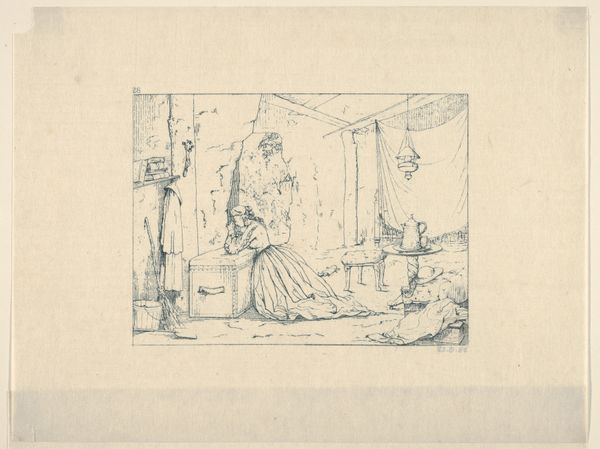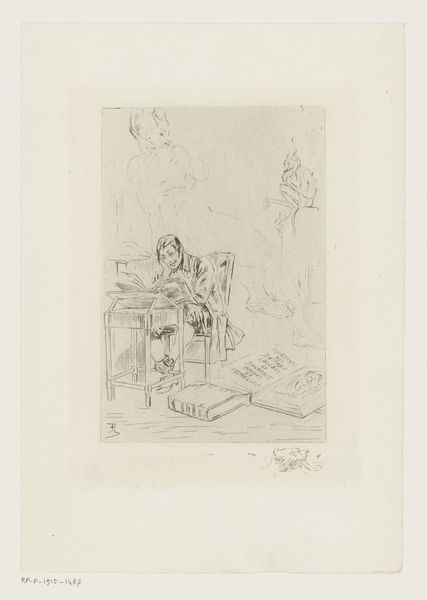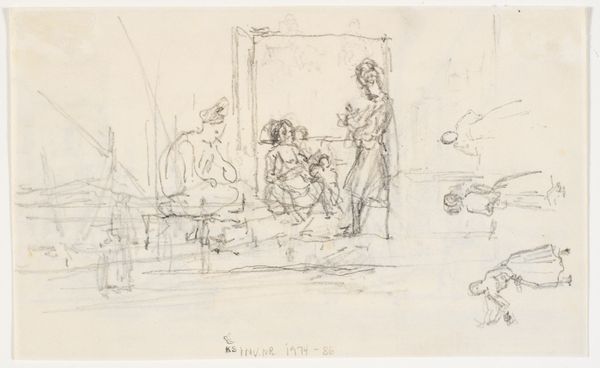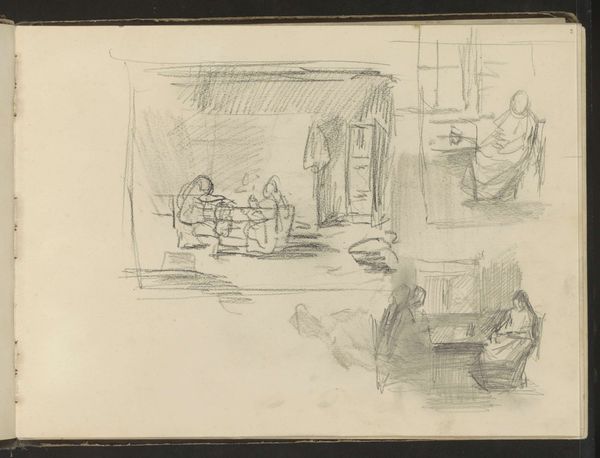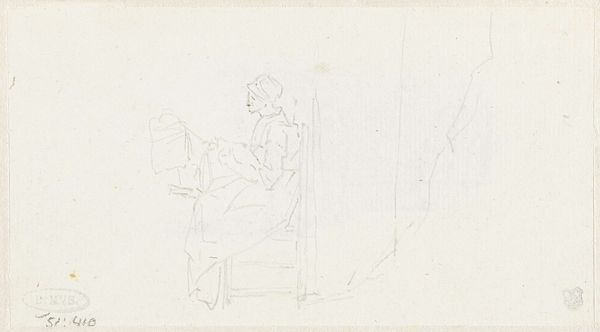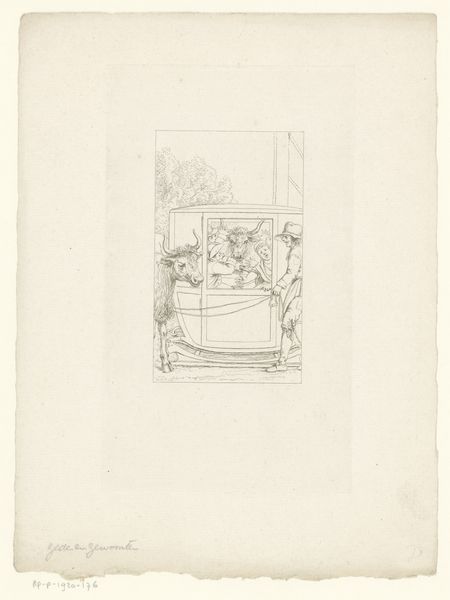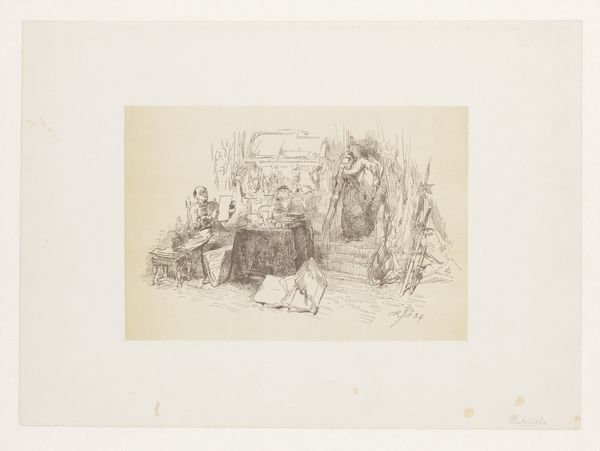
Writing the Emancipation Proclamation (from Confederate War Etchings) 1861 - 1863
0:00
0:00
drawing, print, pencil
#
portrait
#
drawing
# print
#
pencil
#
history-painting
#
realism
Dimensions: Image: 4 3/4 x 6 7/16 in. (12.1 x 16.3 cm) Sheet: 7 5/8 x 10 5/16 in. (19.4 x 26.2 cm)
Copyright: Public Domain
Editor: This is "Writing the Emancipation Proclamation," a print made between 1861 and 1863 by Adalbert John Volck. It's a rather small pencil drawing depicting a man in deep thought at his desk. What do you see in this piece? Curator: The first thing I notice is the way Volck, working as a Confederate sympathizer, uses symbolism to undermine Lincoln’s efforts. See how Lincoln's foot rests on a volume labeled “The Constitution”? It signifies a disregard for foundational law, a deliberate crushing of principles. Editor: I hadn’t noticed that! And there are pictures within the picture. Curator: Yes, and they speak volumes. To the left, there is a window framing a seascape and a bust, perhaps representing the lost grandeur and stability of the Old South. The image hanging on the wall is particularly telling, presenting a skewed depiction of African figures in an aggressive pose. What does that signify to you? Editor: It suggests a fear, or perhaps a deliberately racist portrayal, of the consequences of emancipation. The print seems to communicate an idea more than accurately record a historic event. Curator: Precisely. The iconography reveals a potent anxiety about disrupting the established order, relying on prejudiced imagery to reinforce a particular viewpoint and to activate a shared cultural memory rooted in a specific ideology. Do you see it? Editor: I do now! It’s almost like reading a propaganda poster but on a much smaller, intimate scale. So much information packed into seemingly simple sketches. Curator: Indeed, and these symbolic choices reveal as much about the anxieties of the time as about the event itself. Consider how visual shorthand can become a powerful tool for shaping public opinion. Editor: I'll never look at historical depictions the same way again. Thank you! Curator: My pleasure! It’s crucial to understand that images never exist in a vacuum; they carry emotional and cultural freight that shifts over time.
Comments
No comments
Be the first to comment and join the conversation on the ultimate creative platform.

